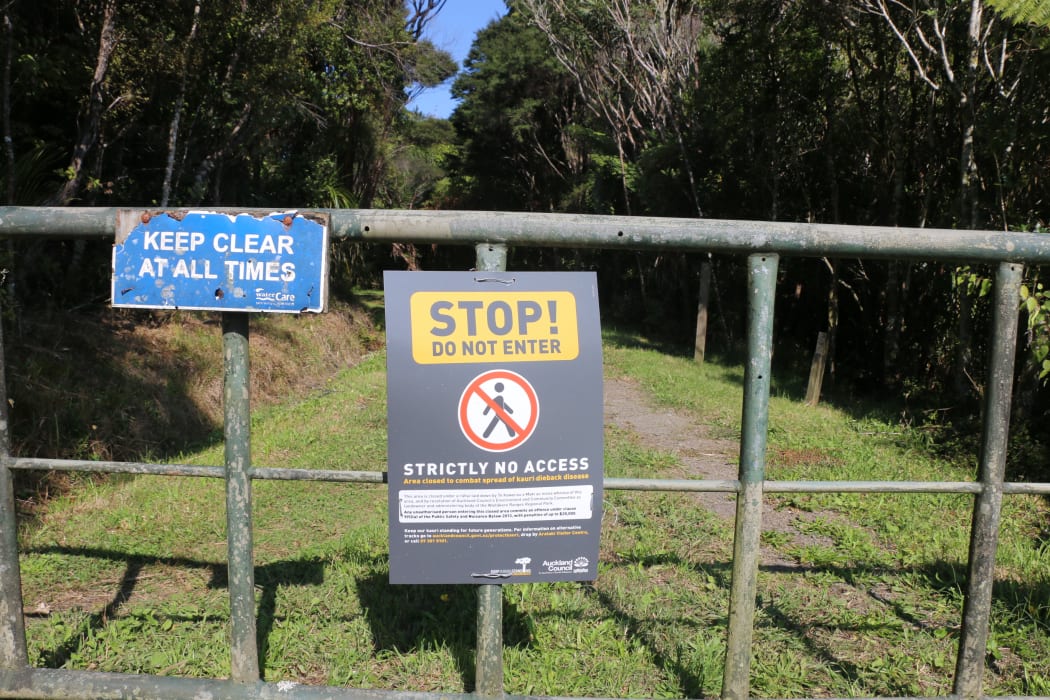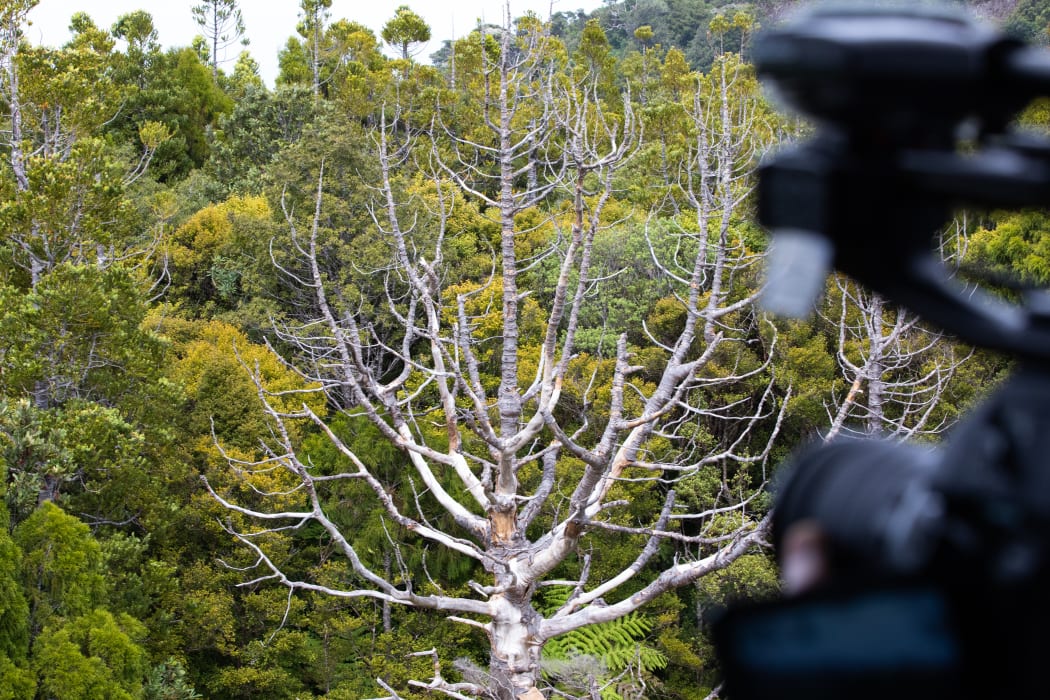Most west Aucklanders feel the plan to re-open tracks closed due to kauri dieback still does not provide them with enough access to the forest, according to a new report.

Tracks have been closed and a rāhui has been placed on the area by local iwi Te Kawerau ā Maki. Photo: RNZ / Joanna MacKenzie
Auckland Council this morning released its analysis of public feedback on the plan for which tracks should be open over the next five years.
It found 71 percent of submitters from the Waitākere area felt the plan did not provide a good balance of recreation experiences and forest health, compared to 38 percent of those living outside Waitākere.
"Submitters (particularly local residents) expressed a deep sense of grief and loss regarding the current closure of the ranges," the report says.
"People feel a strong connection to the forest and use it as a way to connect with nature, get some exercise in the outdoors and reduce stress levels. Because of this, they feel the current track closures deprive them of this connection and have a significant impact on their wellbeing."
People felt the track proposed to remain open did not provide enough variety, with requests for longer tracks, loop tracks and tracks through the centre of the park.
Auckland Council regional parks manager Rachel Kelleher said the responses showed how passionately people felt about the Waitākere Ranges.
"Our forests are definitely loved by many people in a range of different ways, right from those who would like to see us keeping people out for recreational purposes through to those that really want to get in and enjoy them.

Kauri dieback slowly infects and kills the trees, and can be spread through the forest by walkers. Photo: RNZ / Dan Cook
"That's from a recreational perspective but also people who just want to connect with nature and find respite from the daily grind of life."
There were 34 submissions from people with business interests out west, 41 percent of which said the proposed plan would have a negative outcome.
Thirty-two per cent felt it would have a positive impact and 21 percent no impact.
A quarter of respondents suggested there were too many tracks marked for closure, and that this would put undue strain on the tracks left open.
Others - 20 percent - simply did not believe that humans were the main vector for spreading kauri dieback.
There were those (12 percent), however, who disagreed with the proposed plan for the opposite reason - they believe that more needs to be done to protect kauri, meaning they would like to see more being done to control entry.
The five most commonly-mentioned tracks in submissions:
- Piha Valley Track
- Cutty Grass Track
- Odlins Timber Track
- Walker Ridge Track
- Spraggs Bush Track
Read the full report on the feedback and the council's response:

